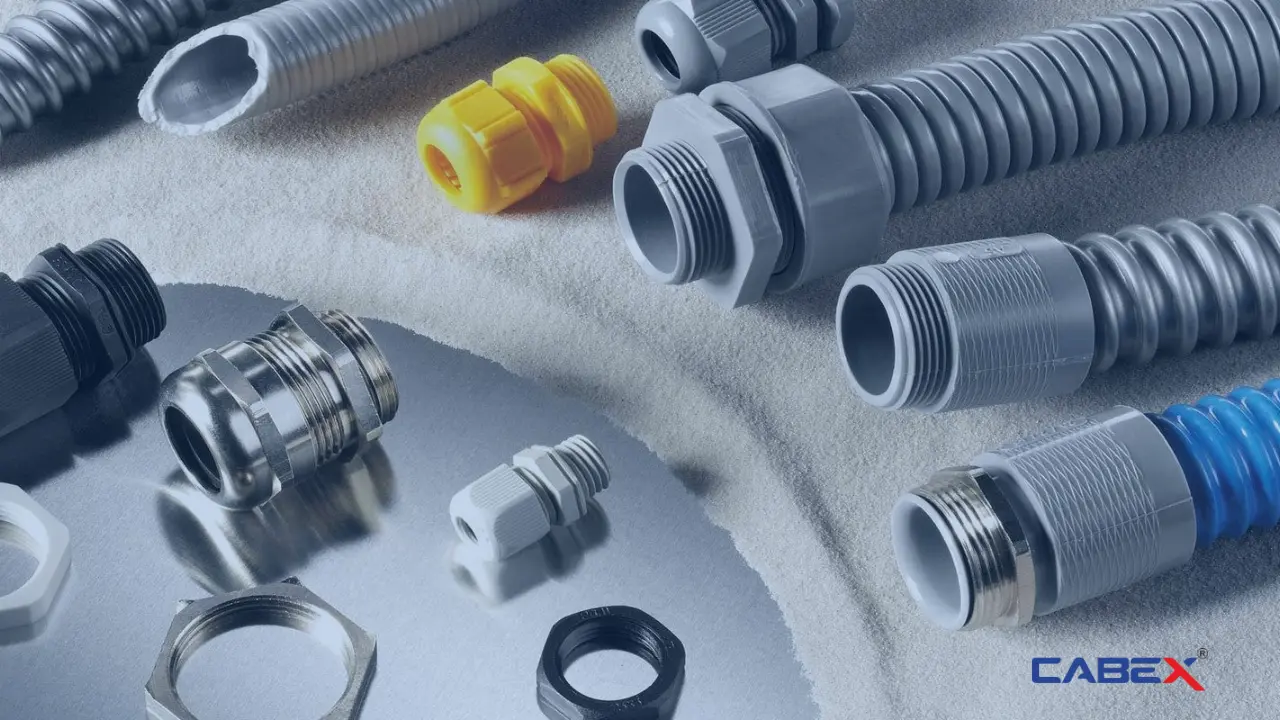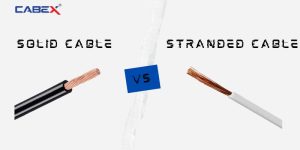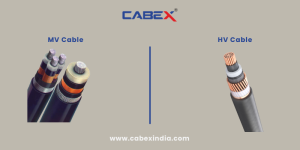When it comes to electrical installations, two terms that often come up are cable gland and cable termination. While they both serve important purposes, they are not the same thing.
Before understanding the difference between a cable gland and cable termination, first we need to understand what exactly the terms are. A cable gland is a device that is used to secure and seal the end of an electrical cable where it enters a piece of equipment or enclosure. Cable glands are designed to prevent moisture, dust, and other contaminants from entering the enclosure or equipment, and to ensure that the cable is securely fastened in place.
On the other hand, a cable termination is the process of connecting the end of an electrical cable to a device, such as a switch or a circuit breaker. Cable terminations can be done using a variety of techniques, including crimping, soldering, or using special termination blocks.
While both cable glands and cable terminations are important for ensuring the safety and reliability of electrical installations, they serve different purposes. The major difference between cable glands and cable terminations is that cable glands are used to protect the equipment and prevent contaminants from entering, while cable terminations are used to connect the cable to the equipment and ensure proper electrical connectivity.
⚠️ Don’t Compromise on Safety! Get Certified Explosion Proof Cable Glands Now! ⚠️
In critical industrial zones, a faulty cable gland can lead to disastrous failures. Protect your assets, personnel, and compliance with our trusted, certified explosion proof cable glands.
- ⚡️ Instant protection against fire, dust, and moisture
- ✅ Certified by ATEX, IECEx, and PESO for global standards
- 🛠️ Engineered for toughest industrial environments
- 🚀 Limited stock! Ensure your safety today and avoid downtime
🎯 Act Now! Click below to secure the safest cable glands for your project BEFORE it’s too late:
👉 Get Explosion Proof Cable Glands
👉 See Industrial Cable Glands
👉 Explore Comprehensive Explosion Protection
What Is Cable Gland?
A cable gland is a device used to attach and secure the end of an electrical cable to a piece of equipment or enclosure. It serves as a connector between the cable and the equipment, allowing electrical signals or power to be transmitted.
The primary purpose of a cable gland is to provide strain relief and prevent the cable from being pulled out of the equipment or enclosure accidentally. It also provides a seal between the cable and the enclosure to prevent dust, water, or other contaminants from entering and potentially damaging the equipment or causing safety hazards.
Cable glands come in a variety of designs and materials, depending on the application and environment in which they will be used. For example, some cable glands are made from plastic, while others are made from metal, and some are designed to be used in hazardous or explosive environments.
The installation of a cable gland typically involves drilling a hole in the equipment or enclosure, passing the cable through the hole, and then securing the cable in place using the gland. This ensures that the cable is firmly attached and properly sealed.
What is Cable Termination?
Cable termination refers to the process of connecting the end of an electrical cable to a device or equipment, such as a switch, socket, or circuit breaker. The purpose of cable termination is to ensure a secure and reliable electrical connection that allows for the transfer of electrical signals or power.
Cable termination can be done using various techniques, including crimping, soldering, or using specialized termination blocks. The choice of termination method will depend on the type of cable and the device to which it is being connected.
Proper cable termination is essential for ensuring the safe and reliable operation of electrical systems. A poorly terminated cable can lead to issues such as voltage drop, arcing, and overheating, which can cause damage to equipment and create safety hazards.
How to Do Cable Termination?
Here are the general steps for terminating a cable:
1. Strip the cable:
Use a cable stripper to remove the outer jacket from the end of the cable. Be careful not to cut the wires inside.
2. Untwist the wires:
Once the outer jacket is removed, untwist the wires so that each one is separate.
3. Trim the wires:
Trim the wires to the appropriate length, leaving enough wire to make the connection. Make sure to leave a little extra length in case you need to make any adjustments later.
4. Arrange the wires:
Arrange the wires according to the wiring diagram for the device or cable you are connecting to. Usually, the wires will need to be arranged in a specific order and placed into a connector or terminal block.
5. Insert the wires:
Insert each wire into its appropriate slot in the connector or terminal block. Make sure each wire is fully inserted and secure.
6. Crimp or tighten:
Use a crimping tool or screwdriver to crimp or tighten the connector or terminal block onto the wires. This will ensure a secure connection.
7. Test the connection:
Test the connection to make sure everything is working properly.
It is important to follow the wiring diagram and instructions provided by the manufacturer to ensure a safe and secure connection. If you are unsure about any aspect of cable termination, it is best to consult with a professional.
“Looking for expert guidance on cable glands and terminations? Contact our team of professionals today for personalized assistance!”
What are the Types of Cable Termination?

There are several types of cable termination techniques that can be used depending on the specific requirements of the installation. Some of the most common types of cable termination include:
1. Crimping:
This technique involves using a crimping tool to compress a metal sleeve around the cable and connector, creating a secure and reliable electrical connection.
2. Soldering:
Soldering involves heating the cable and connector with a soldering iron and applying a solder alloy to create a strong, permanent bond between the cable and connector.
3. Compression:
Compression termination involves compressing the cable and connector together using a specialized tool, creating a tight and secure connection.
4. Insulation displacement:
In this technique, a special connector is used that penetrates the insulation of the cable, making contact with the conductor and creating a secure electrical connection.
5. Screw terminal:
A screw terminal is a type of connector that uses a screw to secure the cable to the connector, creating a reliable and easily serviceable connection.
The choice of cable termination technique will depend on a variety of factors, including the type of cable and connector, the required level of reliability, and the specific requirements of the installation. Proper selection and installation of cable terminations are critical for ensuring the safe and reliable operation of electrical systems.
How to Terminate Power Cable?
The process of terminating a power cable will depend on the type of cable and the type of termination you want to use. However, the following are general steps you can follow:
- Cut the cable to the desired length using a cable cutter or a sharp blade. Ensure that the cut is clean and straight.
- Strip the insulation off the end of the cable using a wire stripper or a sharp blade. The length of the stripped insulation should be equal to the length of the termination.
- Clean the exposed wires using a wire brush or sandpaper to remove any dirt or debris.
- Insert the wires into the termination connector, following the manufacturer’s instructions. The wires should be inserted all the way in, up to the insulation.
- Crimp the connector onto the wires using a crimping tool. Apply enough pressure to ensure a secure connection.
- If using a heat shrink termination, slide the heat shrink tubing over the connector and apply heat using a heat gun or a lighter. The tubing will shrink and provide insulation to the connection.
- Test the connection using a multimeter or a continuity tester to ensure that there is no resistance or short circuit.
- Finally, secure the cable and the termination using cable ties or electrical tape.
It’s important to note that working with power cables can be dangerous and should only be done by a qualified electrician or someone with proper training and experience. Always follow safety guidelines and wear protective gear when working with electricity.
What is Power Cable Termination?
Power cable termination refers to the process of connecting the ends of a power cable to a device or equipment, such as a transformer, switchgear, or motor. The purpose of power cable termination is to create a secure and reliable electrical connection that allows for the transfer of power.
Power cable termination is typically done using specialized connectors that are designed to handle high voltages and currents. These connectors may include components such as insulation, shielding, and stress relief features to ensure a safe and durable connection.
The process of power cable termination can vary depending on the specific requirements of the installation, but generally involves stripping the insulation from the end of the cable, preparing the conductor for connection to the device, and then connecting the cable to the device using the appropriate termination technique.
Proper power cable termination is critical for ensuring the safe and reliable operation of high-voltage electrical systems. A poorly terminated power cable can lead to issues such as overheating, insulation breakdown, and arcing, which can cause damage to equipment and create safety hazards.
What is Another Name for Cable Gland?
Another name for cable gland is cable connector or cable fitting. These terms are often used interchangeably to refer to the device that is used to terminate electrical cables and provide a secure and reliable connection to equipment or devices. Cable glands are available in a wide range of sizes and types to accommodate different cable diameters and applications. They are commonly used in industrial and commercial settings where protection against environmental hazards such as dust, dirt, moisture, or corrosive substances is critical. Regardless of the name used, cable glands play an important role in ensuring the safe and reliable operation of electrical systems.
Which Tool is Used for Cable Termination?
Several tools can be used for cable termination, depending on the specific technique being used. Here are a few examples:
1. Crimping Tool:
This tool is used for crimping connectors onto the end of a cable. It applies pressure to the connector to create a secure, reliable connection.
2. Soldering Iron:
A soldering iron is used for soldering connectors onto the end of a cable. It heats the solder to melt it, creating a strong bond between the cable and connector.
3. Compression Tool:
This tool is used for compression terminations, which involve compressing the cable and connector together to create a secure connection. The tool applies pressure to the connector to ensure a tight fit.
4. Stripping Tool:
This tool is used for removing the insulation from the end of a cable, exposing the conductor for termination. It can be adjusted to remove just the right amount of insulation without damaging the conductor.
5. Cutting Tool:
A cutting tool is used for cutting the cable to the correct length before termination. It ensures a clean, straight cut that will fit properly into the connector.
The choice of tool will depend on the specific termination technique being used, as well as the size and type of cable being terminated. Using the correct tool for the job is essential for ensuring a secure and reliable termination that will perform well over time.
What is Electrical Gland?
Electrical gland, also known as cable glands, are essential components for terminating electrical cables and connecting them to equipment or devices. These glands are designed to provide a secure and reliable seal around the cable, preventing the ingress of dust, dirt, and moisture. Cable gland accessories, such as locknuts, washers, and seals, are also available to ensure a complete and secure installation. These accessories are often used in conjunction with cable glands to provide additional protection against environmental hazards and to ensure the longevity of the cable termination. Proper selection and installation of electrical glands and cable gland accessories are critical for ensuring the safe and reliable operation of electrical systems, particularly in harsh or hazardous environments where protection against moisture, dust, or corrosive substances is essential.
What are Cable Lugs?
Cable lugs, also known as cable terminals or cable connectors, are small devices used to connect cables or wires to electrical equipment, such as transformers, switches, or circuit breakers.
Difference Between Cable Gland and Cable Lugs
| Feature | Cable gland | Cable lug |
|---|---|---|
| Purpose | To provide a secure and waterproof cable entry/exit point | To connect a cable to a terminal or electrical device |
| Types | Male and female | Ring, fork, spade, pin, and butt connectors |
| Materials | Nylon, brass, stainless steel, aluminum, and plastic | Copper, aluminum, and tin-plated copper |
| Installation method | Screwed or threaded | Crimped or soldered |
| Protection | Provides protection against dust, water, and other elements | Does not provide protection against environmental factors |
| Application | Used in outdoor and indoor applications, including marine and industrial installations | Used in electrical connections in buildings and machinery |
| Functionality | Allows for a cable to be securely connected to a device while maintaining its integrity and avoiding any external influences | Provides a reliable and secure connection between cables and electrical equipment |
“Ready to ensure safe and efficient electrical connections? Browse our selection of cable glands and termination tools now!”
Few Frequently asked questions that people generally ask:
A: The three main types of cable tray are ladder, perforated, and solid-bottom.
A: There are several types of cable gland available, including armored, unarmored, explosion-proof, and weatherproof glands, among others.
A: The full form of GI tray is “Galvanized Iron tray”. It is a type of cable tray that is made of galvanized iron and is used to support and protect electrical cables.
A: Cables need to be terminated to create a secure and reliable connection between the cable and the equipment or device it is connected to. Proper termination helps ensure efficient power transfer and can prevent issues such as overheating, arcing, or insulation breakdown.
A: Termination of a wire cable depends on the specific type of cable and termination method being used. Common methods include crimping, soldering, compression, or screw terminals. The process involves preparing the cable by stripping the insulation from the end, attaching the connector, and securing it in place using the appropriate termination technique.
Tag’s: cable termination, glanding, cable glanding, glanding and termination, cable termination meaning, cable glanding and termination, termination cable, what is cable termination, electrical cable gland, cable termination methods, glanding termination, glanding and termination






